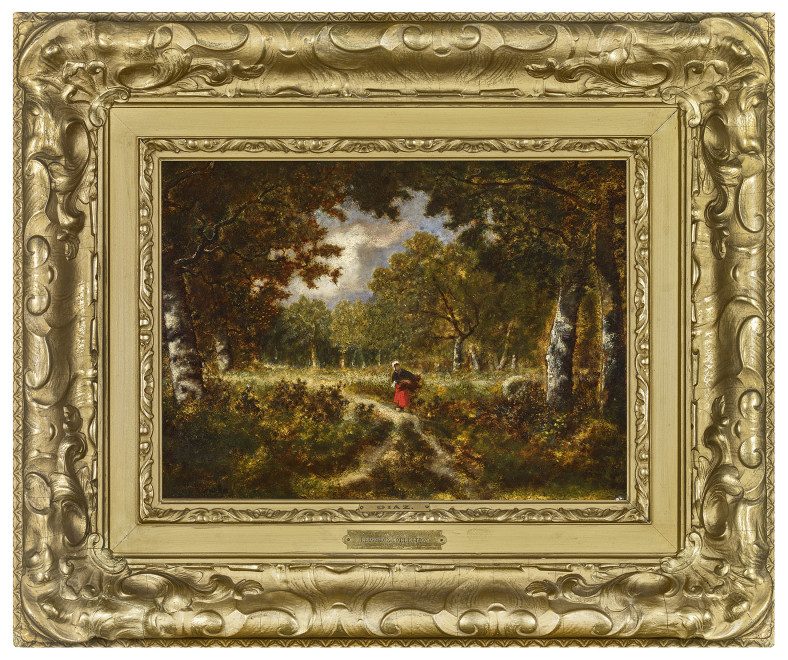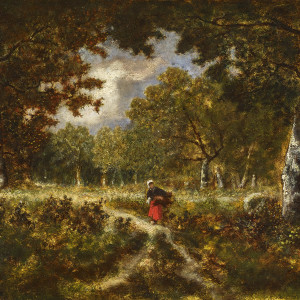Highly regarded as a superb colorist, Diaz frames his wooded interior with white birch trees whose rust-hued leaves and branches form a canopy over the forest floor
Provenance
Thomas McLean's Gallery, London.
N. Mitchell Fine Art, London.
E. M. Maguire, Los Angeles, acquired directly from the above, 13 August 1913.
George A. Leighton (1845-1918), Los Angeles, acquired directly from the above.
Gifted by the above to Currier Gallery of Art, Manchester, NH, 1919.
Their sale; Sotheby's, New York, 16 February 1994, lot 34, as Clairière, Femme venant face au spectateur.
Acquired at the above sale by the present owner.
Exhibited
Boston, Vose Galleries, Barbizon returns to Vose: the origins of modern painting, 2 October-31 December 1993.
Literature
P. and R. Miquel, Narcisse Diaz de la Peña: Catalogue raisonné de l’œuvre peint, Paris, 2006, vol. II, p. 109, no. 703, illustrated.
Catalogue note
Barbizon was not only a place but a School and a Movement and it took on many different forms. It could be identified by the giant oak trees in the Bas-Bréau section of the Forest of Fontainebleau, by the rock formations of the Belle Epine, or by the fields and rolling hills that surrounded the towering trees of the forest. It could represent nature devoid of any human presence, or man’s interactions with the land around him. Each artist, who identified with Barbizon either by living there or more importantly painting there, left a signature mark that defined the movement. For Diaz, it was his views showing the sous-bois or depths of the forest, and our painting is an intricately composed example of this subject.
Highly regarded as a superb colorist, Diaz frames his wooded interior with white birch trees whose rust-hued leaves and branches form a canopy over the forest floor. From the darkness of the sous-bois, a sunlit clearing appears in the middle ground until a break of trees closes the opening in the distance. Swirling white clouds divide a blue sky, their forms echoed in shape and color by the dirt path leading into the forest. A perfect pop of scarlet completes the composition as a peasant in a red skirt walks on the path. Diaz’s palette is only matched by his painterly, almost rough technique of paint application, often with a palette knife, and possibly intended to emulate the varied textures of the forest. The result is a harmonious symphony of color and shape, with every section playing the perfect part.




